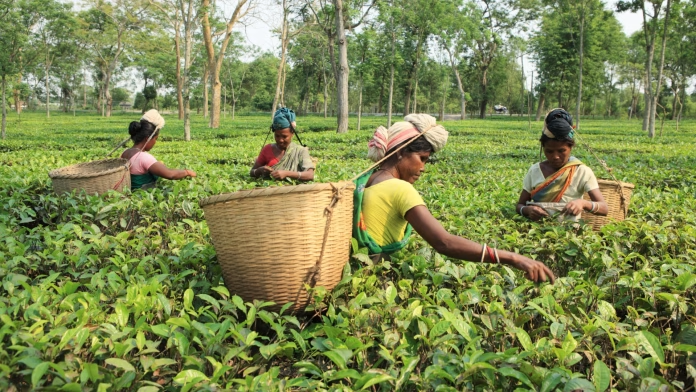Indian tea exporters in 2023 are seeking government assistance to bolster their exports amidst challenging circumstances. The ongoing conflict between Russia and Ukraine, coupled with declining demand from traditional markets such as Europe and the Gulf countries, has prompted exporters to anticipate a significant drop of 10 percent or more in shipments for the current fiscal year. This projection follows a remarkable 18 percent growth in 2022.
The tea industry is also concerned about its production capacity in the current fiscal year due to unfavorable weather conditions.
During the period of January-March 2023, total exports of tea witnessed a decline of six percent, reaching a figure of 48.11 million kg.
“The outlook for 2023 is not very optimistic. 2022 showed good growth largely due to the problems in Sri Lanka due to lower crop there. The Sri Lanka tea export has now recovered a little and other headwinds are hitting the volume and value of Indian tea exports.
“With respect to the traditional markets, we continue to face some problems in Iran in terms of the registration of new contracts, which have been dragging on for more than six months,” said Indian Tea Exporters Association Chairman Anshuman Kanoria.
According to industry experts, the tea exporters are expected to face a potential 10 percent decline in tea exports. Furthermore, surpassing the 200 million kilogram mark in exports will be a challenging task for them.
Additionally, considering the presence of inexpensive imports from Nepal, the actual decline in Indian tea exports is expected to be even greater, as expressed by Kanoria.
Based on data from the Tea Board, the total export volume of the beverage in the fiscal year 2022-23 amounted to 228 million kg.
Chairman S.S. Bagaria of the Bagaria Group expressed that tea exporters are cautiously awaiting the outcome of unfolding geopolitical developments, keeping their fingers crossed for favorable outcomes.
“While we may not be able to achieve the same level of growth as we did in 2022, maintaining the same figure would still be satisfactory for us. The crop is 20 per cent less this year in June and El Nino may make it worse,” he said.
According to Bagaria, traditional markets such as Russia, Iran, and the US experienced significant growth in the previous year. However, the ongoing conflict between Russia and Ukraine has negatively impacted demand in these markets. As a result, the exporters emphasized the need for support from the commerce ministry to enhance their export prospects.
Kanoria said, “We sent representations to the commerce ministry for promotional and infrastructure quality upgradation schemes. We interacted with the Tea Board and gave our suggestions as to what can be done to boost exports. Because the key objective is to boost demand, we need to focus on our promotional efforts in one or two key markets.
He said that there is good potential for market growth in China now.
“However, there is hardly any funding available with the the Tea Board for promotional activity.
“We are looking for promotional support from the Government of India and also some kind of handholding to develop packing infrastructure so that Indian tea can move from being mainly a bulk exporter to packed and made in India tea exports,” Kanoria said.
In order to boost tea exports, the government has announced an increase in the export benefit scheme (RoTDEP) rate. Based on the recommendations of the Tea Board, the RoTDEP rate for tea exports has been raised from INR 3.60 per kg to INR 6.70 per kg. This move aims to provide additional support to the tea industry and encourage higher export volumes.





